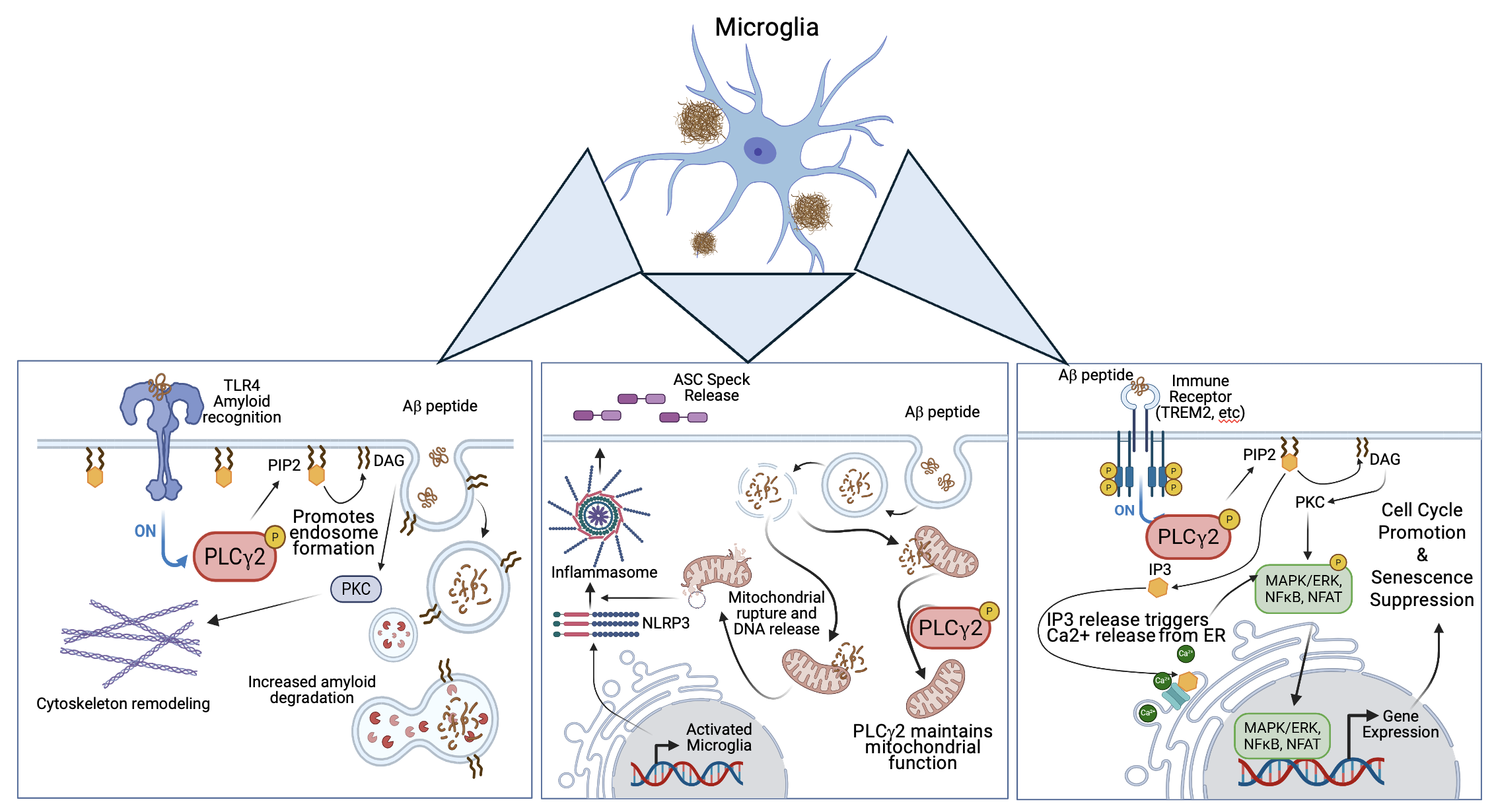You are here
Discovering how microglia function influences Alzheimer's Disease pathology
Speakers
Abstract
Microglia, resident innate immune cells of the central nervous system, internalize and degrade beta-amyloid, a pathological contributor to Alzheimer’s disease (AD). Several genes identified as modulating AD risk are specifically and/or uniquely expressed in the CNS by microglia. Phospholipase C gamma 2 (PLCG2) is a PLC specifically expressed by myeloid cells including microglia. Genetic variants of PLCG2 are associated with altered risk for AD. Variants that reduce enzymatic activity are associated with increased AD risk and vice versa. The P522R variant of PLCG2 modestly increases enzymatic activity while conferring a significant reduction in AD risk. To understand the molecular and cellular mechanisms by which PLCG2P522R alters microglia function to reduce AD risk, we evaluated mouse and human iPSC derived microglia expressing the P522R variant of PLCG2 using transcriptomics and cell-based assays. We observed that microglia expressing PLCG2P522R demonstrate gene expression changes that suggest a shift in function away from inflammatory signaling and towards repair activities. Further, expression of PLCG2P522R reduced inflammasome activation, enhanced internalization of amyloid and suppressed microglia senescence. In comparison to single cell gene expression studies on microglia from AD cases, our findings suggest that microglia expressing PLCG2P522R may resist the molecular changes associated with AD pathology and maintain activities required for amyloid removal and brain homeostasis.


